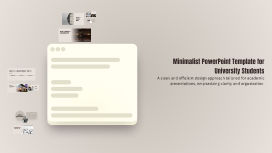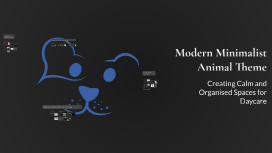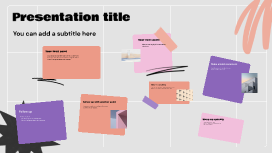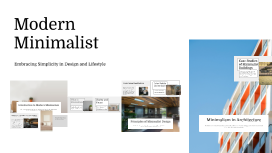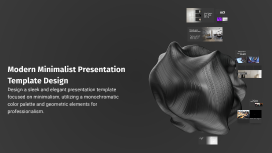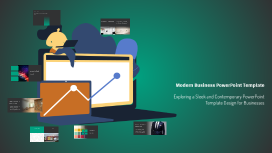Modern Minimalist Presentation Template Design
Transcript: Clean Layouts for Effective Communication Timeless Versatility The black, white, and gray palette is not only classic but also versatile, making it suitable for various design contexts. It creates a harmonious and unified appearance that elevates the overall aesthetic. Prioritize Essential Information Utilize Ample White Space Ensure Consistent Alignment Consistent alignment of text and images creates a professional appearance, facilitating better understanding of the presented material. Clean layouts prioritize essential information, reducing clutter and enhancing focus on key messages. Using ample white space aids in visual separation of elements, making the content more digestible for the audience. Enhanced Readability Color Scheme: Black, White, and Gray This color scheme significantly enhances readability by providing high contrast between text and background, allowing viewers to focus on the content without distraction. Seamless Integration The use of these neutral colors allows for seamless integration with other design elements, such as geometric shapes and typography, facilitating a cohesive design. Organic Forms vs. Geometric Shapes Benefits of Geometric Shapes Conversely, using organic forms introduces a softer, more fluid element to designs. While they can create a more relaxed atmosphere, they may lack the precision and clarity that geometric shapes provide. Geometric shapes, such as circles, rectangles, and triangles, can significantly enhance the visual appeal of presentations. They provide structure and help organize content effectively, making it visually engaging. Understanding Modern Minimalism Modern minimalism is a design philosophy that prioritizes simplicity and functionality. By stripping away unnecessary elements, it emphasizes essential features to cultivate a clean, uncluttered aesthetic that enhances user experience. Importance of Font Selection in Modern Presentations Opting for sans-serif fonts enhances readability and conveys a contemporary aesthetic. Incorporating fonts that accommodate Vietnamese characters not only fosters inclusivity but also ensures that all audience members can engage with the content effectively. Timeless Color Palette Modern Typography Balanced Layouts Utilizing a black, white, and gray color scheme adds sophistication and timelessness to your presentation, ensuring a polished appearance. Choosing sans-serif fonts, especially those supporting Vietnamese characters, contributes to clarity and modernity, reinforcing the professional tone of the presentation. Incorporating clean layouts with balanced spacing allows for easy navigation and understanding, enhancing the overall aesthetic and professionalism of the presentation. Achieving Elegance and Professionalism Modern Minimalist Presentation Template Design Design a sleek and elegant presentation template focused on minimalism, utilizing a monochromatic color palette and geometric elements for professionalism. Implementing Smooth Transitions Emphasizing Key Points Seamless Flow Subtle Animations Effective transitions can help emphasize key points, guiding the audience's attention where it matters most during the presentation. Smooth transitions create a seamless flow, allowing the audience to shift their focus from one slide to the next without disruption. Utilizing subtle animations can enhance the narrative without overwhelming the audience, maintaining their focus on the content. Ensure a Clean Background Limit Excessive Animations Ensuring a clean background is crucial for effective communication. A clutter-free space allows the audience to focus on the key points without being sidetracked by unnecessary visuals or information. Limiting excessive animations helps to keep the audience's attention on the content rather than on distracting movements. Thoughtful use of animations can enhance understanding, but too many can overwhelm viewers and detract from the message. Embracing Modern Minimalism for Impactful Presentations Modern minimalism enhances clarity and engagement, making presentations more effective. It emphasizes cohesive design, strategic color usage, and simplicity in communication, all of which contribute to a more compelling audience experience.






